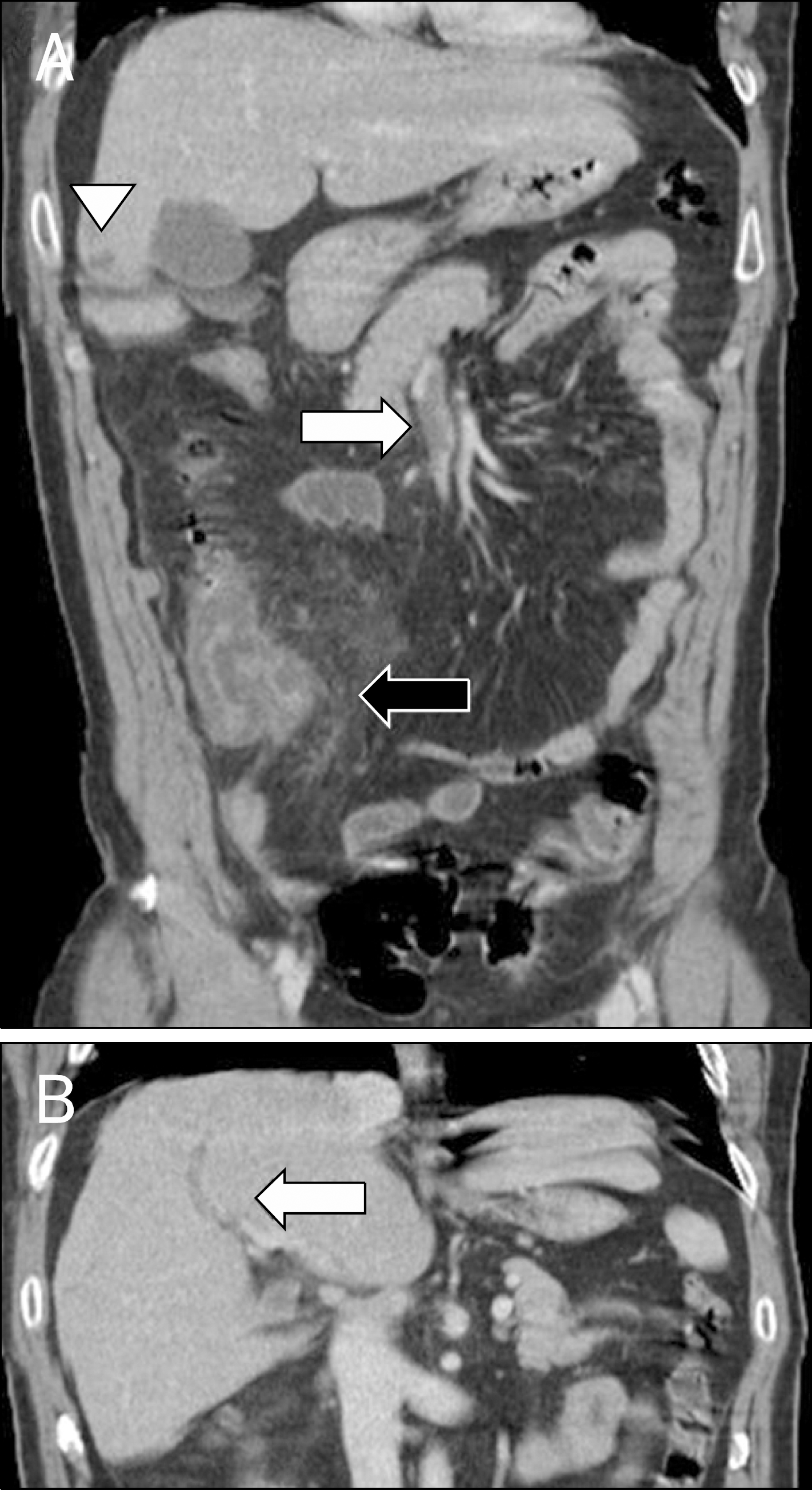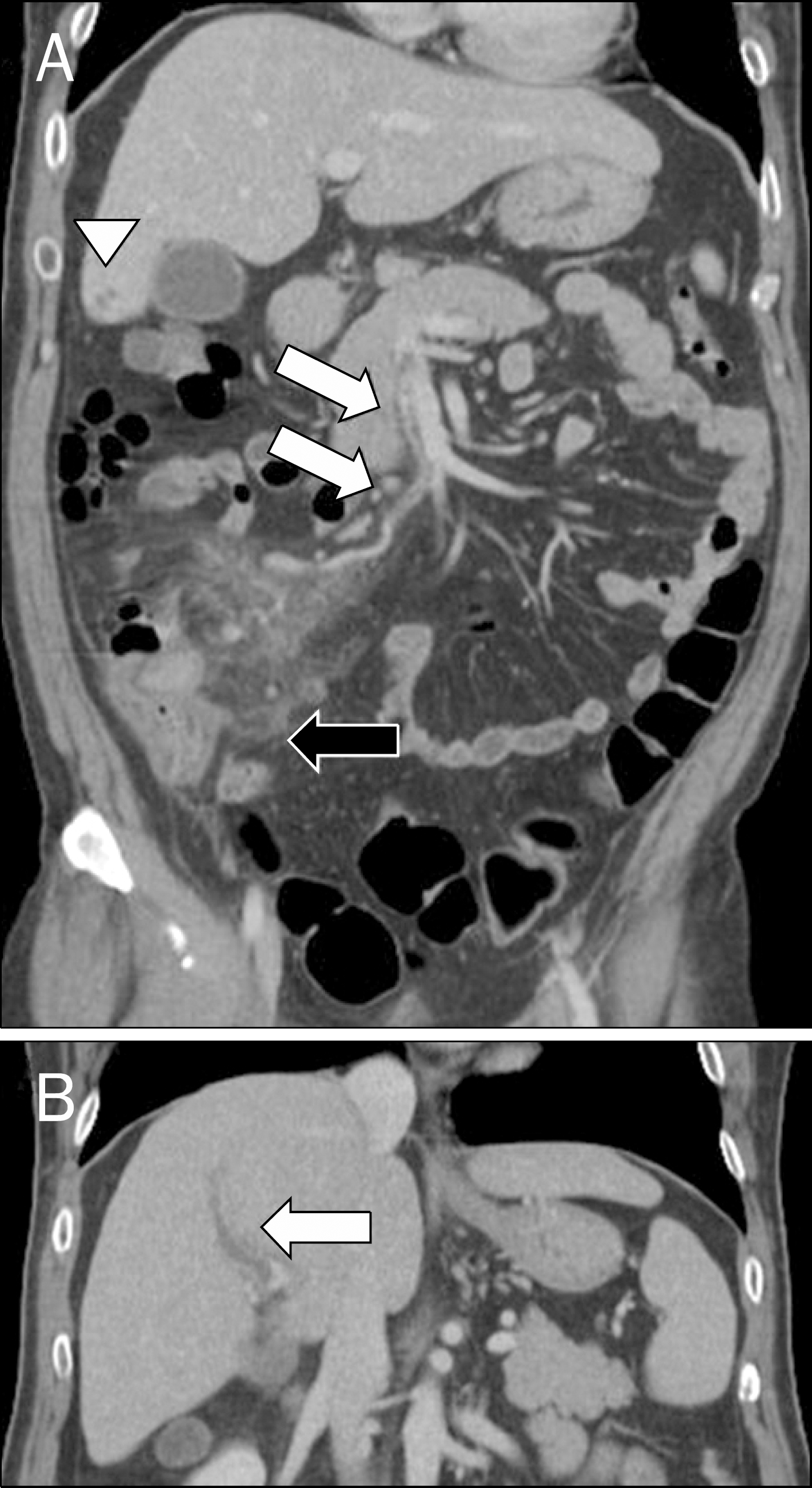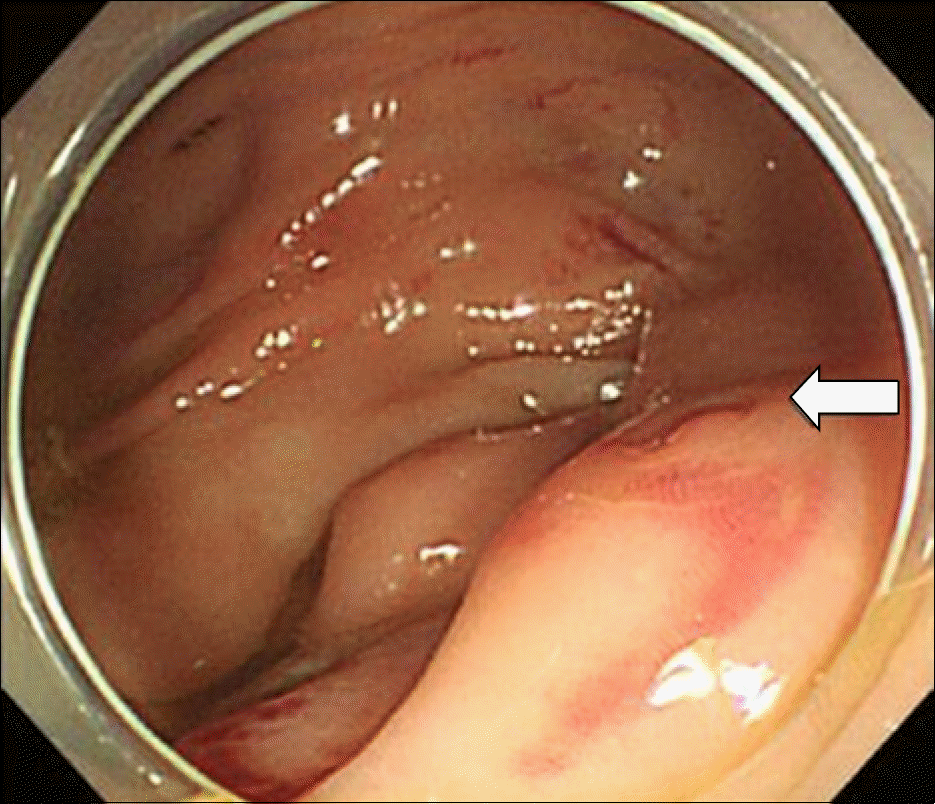Abstract
Pylephlebitis, or suppurative thrombophlebitis of the portal venous system, is a rare condition occurring secondary to abdominal infections such as diverticulitis. Pylephlebitis can be diagnosed via ultrasonography or CT scan, and is characterized by the presence of a thrombus in the portal vein and bacteremia. However, the diagnosis may be delayed due to the vague nature of the clinical symptoms, causing morbidity and mortality due to pylephlebitis to remain high. Early diagnosis and immediate antibiotic therapy are important for favorable prognosis. Therefore, pylephlebitis should be considered in the differential diagnosis for cases of nonspecific abdominal pain and fever. We report a case of pylephlebitis secondary to diverticulitis, associated with Pseudomonas aeruginosa sepsis. Such cases have not been widely reported.
References
1. Plemmons RM, Dooley DP, Longfield RN. Septic thrombophlebitis of the portal vein (pylephlebitis): diagnosis and management in the modern era. Clin Infect Dis. 1995; 21:1114–1120.

2. Hwang MW, Kim BN. Pylephlebitis: report of a case secondary to appendicitis and review of cases reported in Korea. Infect Chemother. 2010; 42:203–207.

3. Driscoll JA, Brody SL, Kollef MH. The epidemiology, pathogenesis and treatment of Pseudomonas aeruginosa infections. Drugs. 2007; 67:351–368.

4. Choudhry AJ, Baghdadi YM, Amr MA, Alzghari MJ, Jenkins DH, Zielinski MD. Pylephlebitis: a review of 95 cases. J Gastrointest Surg. 2016; 20:656–661.

5. Lim HE, Cheong HJ, Woo HJ, et al. Pylephlebitis associated with appendicitis. Korean J Intern Med. 1999; 14:73–76.

6. Shin AR, Lee CK, Kim HJ, et al. Septic pylephlebitis as a rare complication of Crohn's disease. Korean J Gastroenterol. 2013; 61:219–224.

7. Jung HS, Shim KN, Jung JM, et al. A case of pylephlebitis of the inferior mesenteric vein and portal vein. Intest Res. 2009; 7:105–109.
8. Lee BK, Ryu HH. A case of pylephlebitis secondary to cecal diverticulitis. J Emerg Med. 2012; 42:e81–e85.

9. Saxena R, Adolph M, Ziegler JR, Murphy W, Rutecki GW. Pylephlebitis: a case report and review of outcome in the antibiotic era. Am J Gastroenterol. 1996; 91:1251–1253.
10. Kang CI, Kim SH, Kim HB, et al. Pseudomonas aeruginosa bacteremia: risk factors for mortality and influence of delayed re-ceipt of effective antimicrobial therapy on clinical outcome. Clin Infect Dis. 2003; 37:745–751.
11. Ku B, Kim Y, Kim J, et al. A case of pylephlebitis with Streptococcus viridans and Bacteroides fragilis bacteremia secondary to diverticulitis. Korean J Med. 2009; 76:622–626.
13. Arteche E, Ostiz S, Miranda L, Caballero P, Jiménez López de Oñate G. Septic thrombophlebitis of the portal vein (pylephlebitis): diagnosis and management of three cases. An Sist Sanit Navar. 2005; 28:417–420.
14. Balthazar EJ, Gollapudi P. Septic thrombophlebitis of the mesenteric and portal veins: CT imaging. J Comput Assist Tomogr. 2000; 24:755–760.

Fig. 1.
(A) Contrastenhanced abdominal and pelvic CT scans taken at admission. Low attenuation thrombi are visible in the superior mesenteric vein (white arrow). There is diffuse thickening of the cecum and ascending colon walls, associated with inflammation in the diverticula and pericolic fat. Diverticulitis can be seen at the black arrow and an ill-defined low density lesion is in the right liver parenchyma (arrowhead). (B) Low attenuation thrombi are visible in the right portal vein (white arrow).

Fig. 2.
(A) Abdominal and pelvic CT scans, seven days after admission. Multiple thrombi are visible in the ileocolic vein and in the superior mesenteric vein (white arrows). The intensity of the inflammation in the cecum and the ascending colon has increased (black arrow), while the size of the low-density lesion in the right liver parenchyma has decreased (arrowhead). (B) Multiple thrombi are visible in the right portal vein (white arrow).

Fig. 3.
Colonoscopic findings, 14 days after admission. Multiple diverticuli with erythematous mucosal changes around appendiceal orifice (white arrow) and adjacent mucosal erosions are visible in the cecum.

Fig. 4.
(A) Abdominal and pelvic CT scans, 28 days after discharge. The CT scans show no significant change in the right portal vein thrombi (white arrow). (B) Some resolution of thrombosis in the superior mesenteric vein was noted (white arrow). (C) There is improvement of the diverticulitis of the cecum and ascending colon (black arrow) and only minor signs of liver abscess (arrowhead).





 PDF
PDF ePub
ePub Citation
Citation Print
Print


 XML Download
XML Download